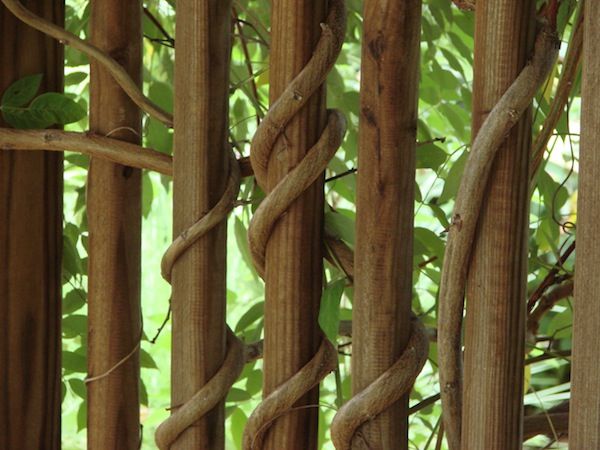Training Wisteria to Behave!
March 17, 2015 | By webadmin
Wisteria vines evoke images of traditional and romantic southern landscapes. The vines drip with clusters of fragrant, lavender blooms in spring, followed by bright green foliage. The visual effect of a large wisteria vine can be quite dramatic. However, if you’ve ever grown wisteria without a plan of training it, then you know that with its luxurious charm comes chaos! The strong vines can quickly get out of control and overwhelm any nearby tree or structure before you know it. You can keep wisteria under control with just a bit of planning and a very strong structure.

Training Wisteria
Choose a well thought out place in the landscape to grow your wisteria. A strong pergola would a perfect place to plant a larger variety of wisteria, while a well built arbor would be perfect for a smaller variety. Here in North Texas, American wisteria (Wisteria frutescens) is a variety that has smaller blooms and is less aggressive than Japanese or Chinese varieties. Even with it’s smaller blooms it’s still a stunning specimen and a bit easier to keep tamed. However, despite it’s smaller stature, American wisteria will still need a sturdy support structure.
Once planted next to its supportive companion structure, you’ll want to tie the vines with soft twine as it grows. Once the plant is established, tieing it to its structure won’t be necessary as they will begin to twine around the structure itself.
Summer Pruning
Summer is a good time to prune wisteria to keep it in shape. If you notice spaces where you want your wisteria to grow, gently tie the stems to that space. Next, cut back all new growth to 12-inches from where it grows out of the main stem. This will allow sun to reach the center of the plant and encourage air circulation. Pruning in this manner will also encourage and promote more flowers the following spring.
Winter Pruning
Wisteria can be pruned again in late winter to keep the plant’s size under control. Prune off long, wispy stems that sprouted after the summer blooms. Prune back, leaving five buds after the main branch, and cut just above the fifth bud.
Wisteria can damage your trees.
It’s a common sight in our area to spot wisteria peeking out from the middle of large photinias and growing up the trunks of established oak trees. While this does look beautiful, it can also kill large trees and shrubs over time. Large varieties can smother plants, blocking out light from their foliage and inhibiting growth. It’s best to remove wisteria from any plants you don’t want to preserve.

Wisteria vines are strong and will need a sturdy support to grow upon.
Ready to take the leap and plant some dreamy wisteria? You’ll need a pergola or large arbor to grow it the right way. Wisteria can also be used to cover large fences - just make sure the fence is sturdy enough to bear the weight of the mature vines.
